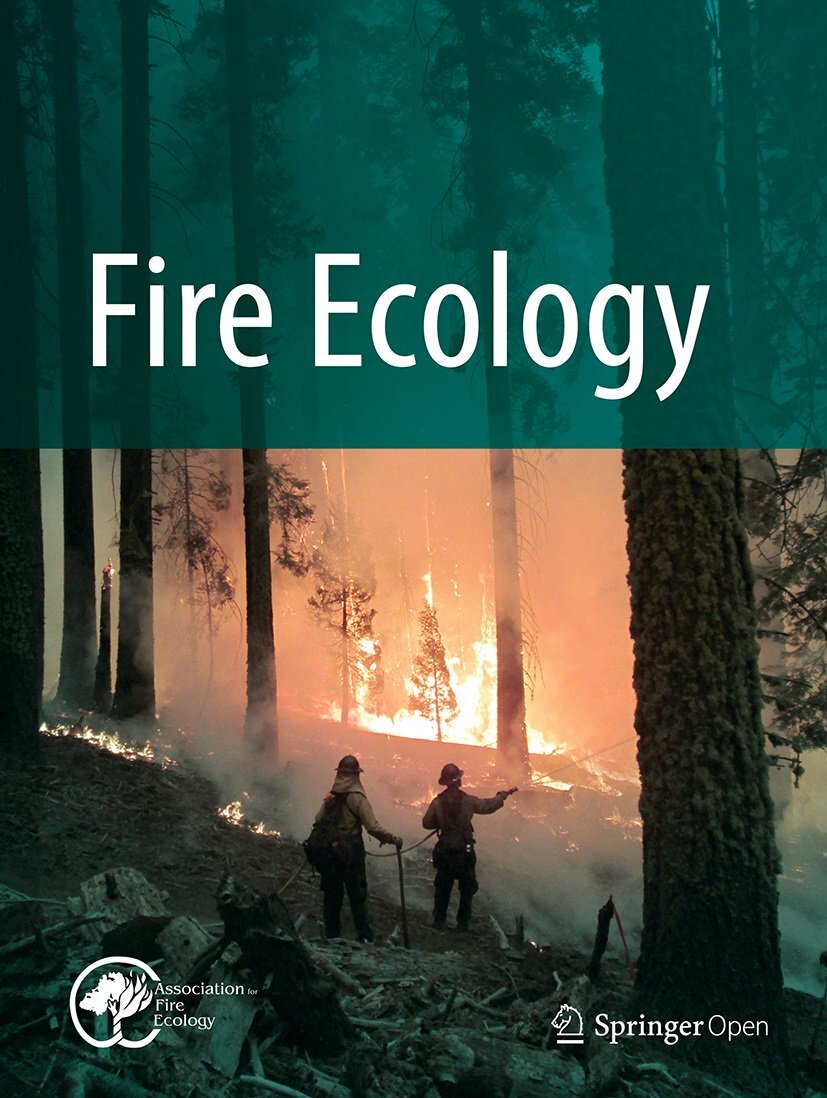research Highlight: Major changes in climate, vegetation, and ecological resilience in recent decades suggest climate smart management strategies for western US dryland shrublands and woodlands
Authors: Jeanne C. Chambers, Jessi L. Brown, Sofia Koutzoukis, Richard F. Miller, Sarah Barga, Rhett Boswell, Robert W. Heckman, Mark Madsen, Matthew C. Reeves, Vaughn Thacker & Stephanie G. Yelenik
This research highlight summarizes an article recently published in Fire Ecology that examines herbivory as a supplement to prescribed fire in the Missouri Ozarks where fire use can be limited.
Increases in fire severity and extent place ecosystems and communities at risk
Catastrophic wildfire is having devastating consequences for human communities and native ecosystems. Elevated CO2 and climate warming have resulted in greater fuel loads, higher temperatures, and more extreme fire weather, while wildland-urban interface development has increased risks to people and property. Reducing fire risk through proactive vegetation management, while sustaining the health, diversity, and productivity of native ecosystems, represents a challenge that requires new thinking, approaches, and tools.
Managers are faced with a moving target
Resource managers tasked with developing strategies for reducing fire risk while sustaining ecosystems are often faced with moving targets because of ongoing global change processes and their effects on vegetation composition, fuel characteristics, and fire regimes. Current management strategies are often static, targeting the degree of departure or change in ecological state from a reference condition. Strategies that include the effects of climate change are typically based on projections of an ecosystem’s modeled vulnerability to climate change. Coupling information on the changes in climate and ecological resilience (recovery potential) in recent decades with the effects on vegetation trajectories and fire regimes may be equally or more effective.
A new approach
We developed an approach for evaluating the ongoing changes (1980 to 2019) in climate and vegetation and using that information to determine appropriate fuels and other vegetation management strategies for dryland shrubland and woodland landscapes. The approach used geospatial data to assess ecological conditions, evaluate the direction and magnitude of change, and determine the drivers of the change. The approach was illustrated for a USDA Forest Service Wildfire Crisis Strategy landscape that is experiencing widespread invasion of non-native annual grasses, expansion of pinyon and juniper trees, and extensive wildfires.
climate warming and vegetation change
Our approach showed that climate warming in southwest shrublands and woodlands has been associated with large changes in vegetation and fuels and decreases in both resilience to wildfire and resistance to annual grass invasion even in the absence of fire. The perennial grasses and forbs needed to sustain these ecosystems following wildfires and management treatments were decreasing, but the annual forbs and grasses that elevate wildfire spread and degrade ecosystems were increasing. The pinyon and juniper trees that increase woody fuels and cause more severe fires were also increasing. Although most wildfires were likely burning within expected time intervals, the areas burned during a single event were likely larger than in the past and post-fire outcomes had changed with many areas converting to invasive annual grasses. An increase in temperature between 1980-1999 and 2000-2019 resulted in an 11% decrease in the areas resilience to wildfire and resistance to the invasive annual grasses.
Climate smart management strategies
Climate smart management strategies can help direct ecosystems into conditions that can decrease fire risk, increase resistance to plant invasions, and reduce vulnerability to climate change. Importantly, these include monitoring the ongoing changes in both climate and vegetation to identify where shifts in climate are resulting in decreases in resilience and resistance and loss of climate suitability for native species. Management actions to maintain or increase perennial grasses and forbs are essential for minimizing expansion of invasive annual grasses and include activities such as assisted migration, postfire restoration, and improved livestock management. Woody fuel treatments can reduce the risk of high severity fire and reduce competition with desirable understory species in shrublands and woodlands. Information on high value resources, such as wildlife habitat, combined with an understanding of the relative resilience and resistance of the potential treatment area, can be used to determine the most effective types of treatments and prioritize their locations. Climate smart management strategies such as these can be used to facilitate change that limits transitions to undesirable ecological states and prevents collapse of ecosystem functions and services.



